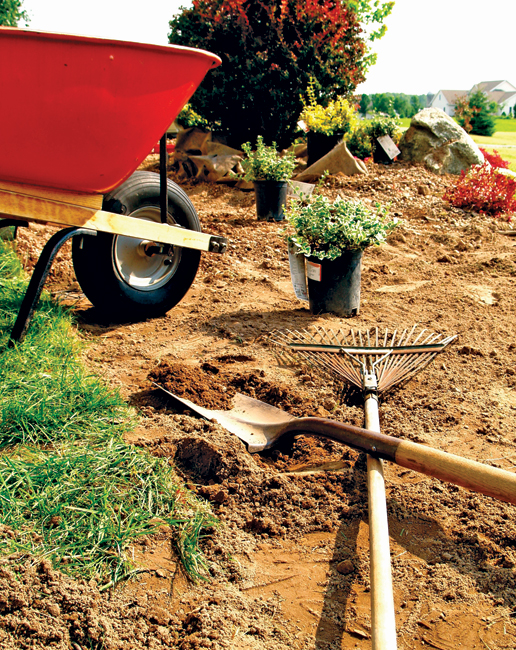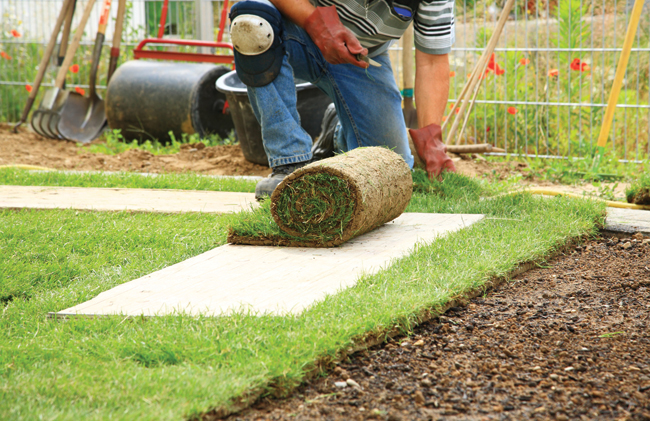The Dirt on the Green Industry
For many years, the lawn and landscape industry experienced record growth with phenomenal 10 to 15 percent increases each year in the late 1990s and 2000s. The events of Sept. 11 kept many families from traveling and many spent their travel expenses on their homes, lawns and landscapes. It was the beginning of the stay-cation syndrome. In contrast, this past year the lawn and landscape industry faced the greatest economic challenges in its history.
Consultants will often say in a down economy: “If you can make it in this climate, you can make it in any condition.” For many companies, 2010 has been that year. If economic challenges were not enough, the weather brought on even greater crisis for many companies as the Northeast and Mid-Atlantic faced record drought, while flooding brought many Midwestern companies to the brink of bankruptcy. In the Mid-Atlantic, lawns did not just go dormant — many died out. Water bans and restrictions furthered the problem.

Rising costs of fuel and health care have added to the industry impact. In addition, uncertainty about the economy and the need and ability to secure temporary and seasonal workforce affected the use of the H-2B program. New regulations on paying transportation for H-2B workers, knowing the returning worker exemption would not pass Congress, and the concern of having federal authorities implement requirements for employers to validate the legal status of workers with social security numbers had impacts on the industry.
States, local governments and the media continued their focus on environmental issues, including water quality. They are making dangerous and detrimental judgments and statements on the value of maintaining green spaces by going after pesticides, fertilizers and equipment use. Not only are activists and legislators pushing these issues, but other groups are trying to protect their turf while the green industry associations are all trying to work together with a more united effort.
A group promoting organic products and working with the New York legislature suddenly realized that its products were also at risk in the new rulings with school legislation passed. In addition, blackout periods for fertilizer application were passed in the state. Programs, such as WaterSense, that were launched for the good of the environment and the green care industry have suddenly begun turning against those who actively supported and kicked off the program by asking developers to put less turf in the landscape. While science marches on and continues to promote the advantages of healthy green spaces in purifying air and water, activists continue to wrangle over issues and seek to promote their own biased answers.
The Professional Landcare Network (PLANET) has worked hard to support the passage of state preemption laws to stop local governments from being permitted to pass ordinances regulating fertilizer application. Similar state laws about pesticides were pushed by the industry and passed years ago. PLANET members and staff have worked with the Responsible Industry for a Sound Environment (RISE) and others to pass state laws preempting local regulation of fertilizer use in 11 states since 2004. This has resulted in a total of 16 states with fertilizer preemption. The hope is that several more states will pass these bills in 2011.
TMDL and Its Impact
With regard to federal legislation, Chesapeake Bay Total Maximum Daily Load (TMDL) may have the biggest impact on lawn care applications in history. TMDL represents the maximum amount of a pollutant, including lawn fertilizer, that a body of water may receive and still meet its water quality standards with a margin of safety. The Chesapeake Bay’s TMDL will be closely coordinated with implementation plans and actions, backed by a series of two-year commitments and strong accountability provisions to assure progress.
It will be the largest, most complex monitoring of TMDL ever, involving interstate waters and the effects on
water quality from the cumulative impact of more than 17 million people, 88,000 farms, 483 significant treatment plants, thousands of smaller facilities and many other sources in the 64,000-sq-mile watershed. The TMDL will allocate loadings of nutrients (nitrogen and phosphorus) and sediment to all jurisdictions in the Bay’s watershed, including New York, Pennsylvania, West Virginia, Delaware, Maryland, Virginia and the District of Columbia.
Immigration Reform
It looks like Congress may address Comprehensive Immigration Reform in 2011, so we must be united in the principles that comprehensive immigration reform should include:
- Effective enforcement on the border and in the workplace;
- A practical answer for the 12 million unauthorized immigrants already in the country; and
- More visas for foreign workers, including visas for seasonal workers, arriving in the future — visas for enough legal workers to keep U.S. businesses open and growing.
Rather than artificial quotas, we need a mechanism for setting foreign work visas, including seasonal work visas that are truly responsive to employer demand when American workers cannot be found. Without an adequate pipeline for future workers, the United States could not make immigration enforcement stick.
Overall
The economy will come back but at a slower pace and, hopefully, the weather patterns will change. As the real estate industry recovers, so will the lawn and landscape industry. The legislative challenges will still remain the same, even if considerable changes in Congress occur, so it is imperative that the industry unite to have a significant voice on Capitol Hill and in state capitals. PLANET will hold its Legislative Day, July 18-19, 2011, and everyone, whether you are a landscape or lawn care professional or a supplier, should come to Washington, D.C., and have their voices heard. PLANET has a legislative program to help you to be an industry ambassador. Sometimes it may seem like an uphill battle, but nothing will get done until we all come together and raise our voices in unison.
Sabeena Hickman is the CEO of the Professional Landcare Network (PLANET), based in Herndon, Va. PLANET is the association of members who create and maintain the quality of life in communities across America. With more than 3,500 member companies and affiliates, these firms and their employees represent more than 100,000 green industry professionals. Some of these professionals have taken the extra step of becoming certified through PLANET and bear the distinction of being known as Landscape Industry Certified. For more information, visit www.landcarenetwork.org.


Comments are closed here.